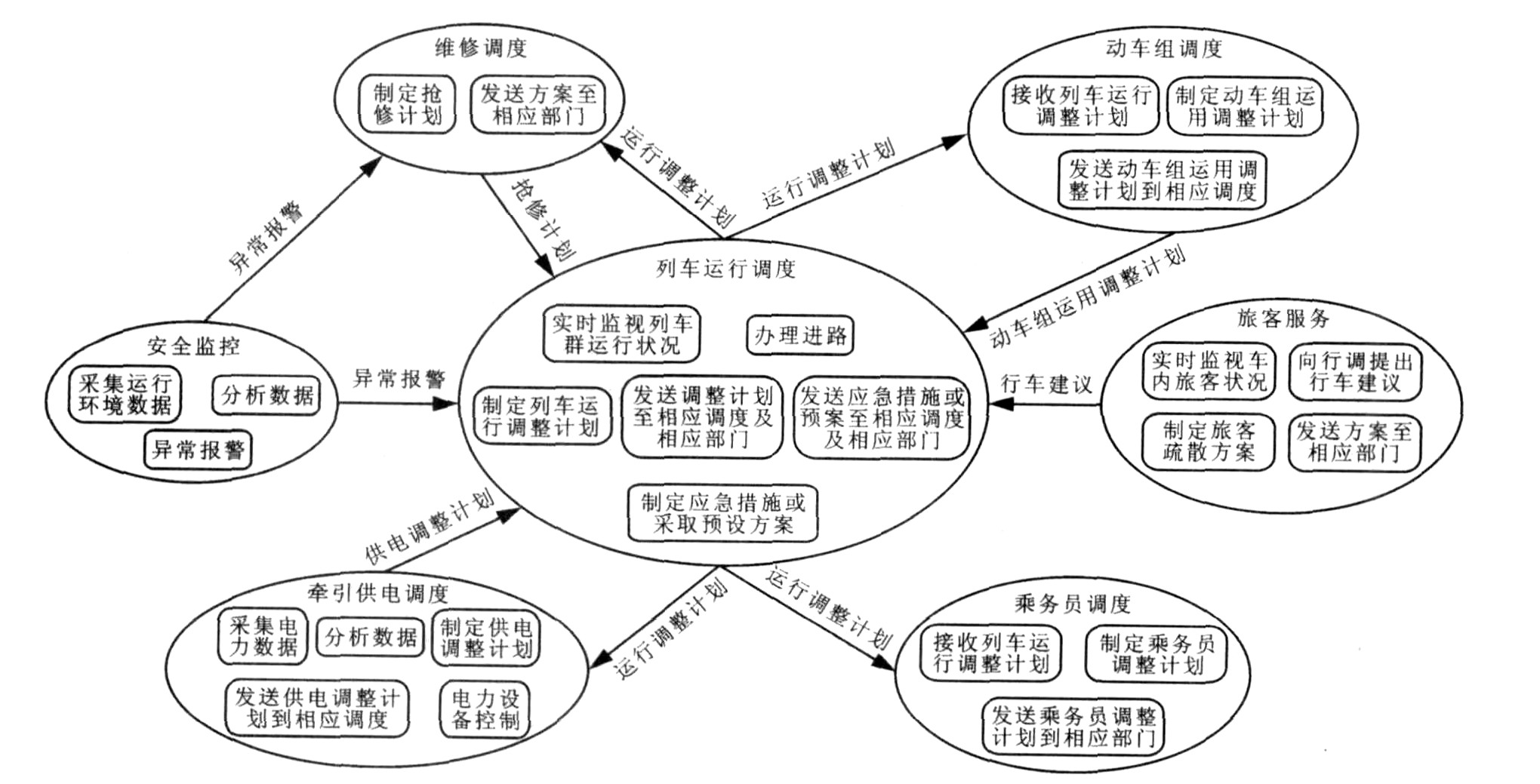Description of architecture and rules of integrated operation dispatch system for passenger dedicated line
Article Text (Baidu Translation)
-
摘要: 为提高客运专线综合运营调度系统的智能性, 采用智能体(Agent) 技术, 将运输调度决策过程看作是Agent之间的协商过程, 建立了客运专线综合运营调度系统的多智能体(MAS) 体系结构。将列车运行调度子系统、动车组调度子系统、牵引供电调度子系统和车站分别抽象为Agent, 所有Agent构成了Agent社会, 给出了Agent社会规则。在体系结构的基础上, 给出了二路四层垂直型结构的公司行调Agent结构和反应式车站Agent结构, 并阐述了其工作原理。仿真结果表明: 在遵循社会规则下, Agent能在10s内调整列车运行计划, 5s内选取调度预案, 因此, MAS体系结构可行, 能够提高运营调度系统的智能性。Abstract: In order to improve the intelligence of the integrated operation dispatch system for passenger dedicated line, using agent technology, the architecture of multi-agent system (MAS) was presented by regarding the process of transportation dispatch as the negotiating process among agents. Train traffic control subsystem, motor train unit dispatch subsystem, the power supply subsystem of electric traction and railway station were abstracted into agents respectively, and all these agents constituted an agent society, in which social rules were given. Based on MAS architecture, the structure of company's train traffic control agent was given, which was 2-way-4-layer vertical architecture, railway station agent architecture was given, which was reactive one, and their running principles were desicribed. Applied result shows that, for agent, the time of adjusting operation plans on train is less than 10 s, the time of choosing dispatch preplans is less than 5 s, so MAS architecture is feasible and has high intelligence under the control of the rules.
-
Key words:
- passenger dedicated line /
- integrated operation dispatch system /
- MAS /
- social rule
-
[1] 王宏刚, 贾利民, 蔡国强. 客运专线运营调度管理系统各子系统间关系的研究[J]. 中南大学学报: 自然科学版, 2007, 38 (S): 1033-1036. https://cpfd.cnki.com.cn/Article/CPFDTOTAL-ZNZD200708001201.htmWANG Hong-gang, JI A Li-min, CAI Guo-qiang. Study onthe relations among various subsystems in the operation dispatch management systemfor the passenger-dedicated line[J]. Journal of Central South University: Science and Technology, 2007, 38 (S): 1033-1036. (in Chinese) https://cpfd.cnki.com.cn/Article/CPFDTOTAL-ZNZD200708001201.htm [2] 刘金琨, 尔联洁. 多智能体技术应用综述[J]. 控制与决策, 2001, 16 (2): 133-140. https://www.cnki.com.cn/Article/CJFDTOTAL-KZYC200102001.htmLIUJin-kun, ER Lian-jie. Overviewof application of multiagent technology[J]. Control and Decision, 2001, 16 (2): 133-140. (in Chinese) https://www.cnki.com.cn/Article/CJFDTOTAL-KZYC200102001.htm [3] 李先进, 杨肇夏, 杜鹏. 基于MAS的列车运行调整方法[J]. 中国铁道科学, 2006, 27 (1): 115-119. doi: 10.3321/j.issn:1001-4632.2006.01.023LI Xian-jin, YANG Zhao-xia, DUPeng. MAS-based method for train operation adjust ment[J]. China Rail way Science, 2006, 27 (1): 115-119. (in Chinese) doi: 10.3321/j.issn:1001-4632.2006.01.023 [4] IVER R V, GHOSHS. Adistributed decision-making algorithm for railway networks: modeling and si mulation[J]. IEEE Trans-actions on Vehicular Technology, 1995, 44 (1): 180-191. doi: 10.1109/25.350284 [5] VERNAZZA G, ZUNI NO R. A distributed intelligence methodology for rail way traffic control[J]. IEEE Transac-tions on Vehicular Technology, 1990, 39 (3): 263-270. doi: 10.1109/25.131008 [6] 蒋阳升, 陈彦如, 蒲云. 基于多代理机制的列车运行调整模型及算法动态集成研究[J]. 中国铁道科学, 2005, 26 (1): 114-118. https://www.cnki.com.cn/Article/CJFDTOTAL-ZGTK200501021.htmJI ANG Yang-sheng, CHEN Yan-ru, PU Yun. Study on dy-namicallyintegrated model and algorithmfor problemof train operation adjust ment based on multi-agent system[J]. China Rail way Science, 2005, 26 (1): 114-118. (in Chinese) https://www.cnki.com.cn/Article/CJFDTOTAL-ZGTK200501021.htm [7] 王宏刚, 张一军, 张琦, 等. 京沪高速铁路列车运行的调整[J]. 交通运输工程学报, 2004, 4 (1): 66-69. http://transport.chd.edu.cn/article/id/200401017WANG Hong-gang, ZHANG Yi-jun, ZHANG Qi, et al. Train operation adjustment on Jing-Hu high-speed railway[J]. Journal of Traffic and Transportation Engineering, 2004, 4 (1): 66-69. (in Chinese) http://transport.chd.edu.cn/article/id/200401017 -





 下载:
下载:





